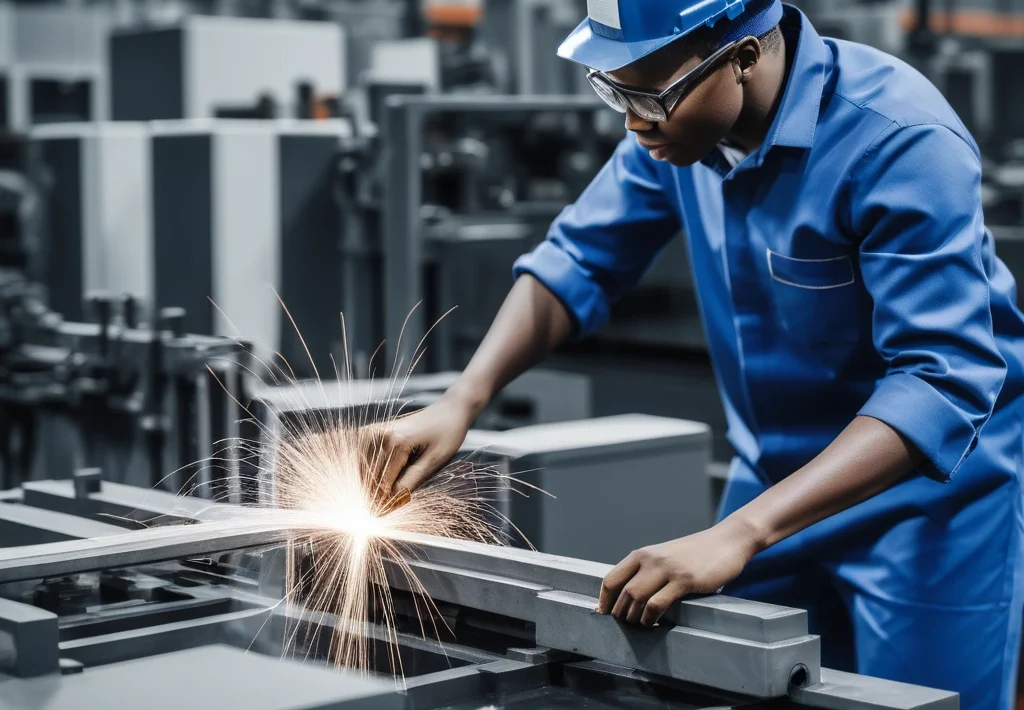The Future of South African Manufacturing: A Roadmap for Growth
South Africa’s manufacturing sector stands at a critical juncture. Facing both challenges and exciting opportunities, its future hinges on strategic adaptation and innovation. This article delves into the current context, market trends, relevant laws, and emerging opportunities shaping the sector’s trajectory.
South African Context: A Mixed Bag
The South African manufacturing landscape is characterized by a unique blend of strengths and weaknesses. Historically, it has played a pivotal role in the national economy, contributing significantly to GDP and employment. However, recent decades have witnessed a decline in its relative importance, attributed to factors such as global competition, rising input costs, and infrastructure bottlenecks. The sector’s strengths lie in its established industrial base, diverse resource endowment, and regional market access. However, challenges persist in areas like skills shortages, policy uncertainty, and crime.
Market Trends: Navigating the New Normal
Several key market trends are reshaping the South African manufacturing sector. The rise of automation and digital technologies, such as artificial intelligence and the Internet of Things (IoT), is transforming production processes and supply chains. Furthermore, growing consumer demand for customized and sustainable products is pushing manufacturers to adopt agile and eco-friendly practices. The African Continental Free Trade Area (AfCFTA) presents a significant opportunity for South African manufacturers to expand their market reach and leverage regional value chains.
Laws and Regulations: A Framework for Growth
The South African government has implemented various laws and regulations aimed at supporting the manufacturing sector. The Industrial Policy Action Plan (IPAP) outlines strategic interventions to promote industrial development, diversification, and competitiveness. The Competition Act aims to create a fair and competitive market environment, while the Broad-Based Black Economic Empowerment (B-BBEE) policy seeks to redress historical inequalities and promote economic transformation. Furthermore, environmental regulations are increasingly influencing manufacturing practices, driving a shift towards cleaner production methods.
Opportunities for Growth: Seizing the Moment
Despite the challenges, the South African manufacturing sector presents numerous opportunities for growth and innovation. The country’s abundant natural resources, coupled with its growing renewable energy capacity, provide a competitive advantage in resource-intensive industries. The burgeoning digital economy offers opportunities for manufacturers to leverage technology to enhance productivity, optimize operations, and develop new products and services. Furthermore, the AfCFTA presents a vast untapped market for South African manufacturers, particularly in sectors like agro-processing, automotive, and textiles.
Examples of Success: Leading the Way
Several South African manufacturers have successfully navigated the challenges and capitalized on emerging opportunities. For example, companies in the automotive sector have leveraged the country’s established manufacturing base and skilled workforce to become major exporters of vehicles and components. Similarly, companies in the renewable energy sector are taking advantage of the country’s abundant solar and wind resources to manufacture and export renewable energy technologies. These success stories demonstrate the potential of the South African manufacturing sector to adapt, innovate, and thrive in a rapidly changing global landscape.
Statistics and Analysis: A Data-Driven Perspective
According to Statistics South Africa, the manufacturing sector contributed approximately 12% to the country’s GDP in 2022. The sector employs over 1.5 million people, making it a significant contributor to employment. However, the sector’s growth rate has been sluggish in recent years, highlighting the need for structural reforms and targeted interventions. Analysis by various industry bodies indicates that the sector’s future growth will depend on factors such as increased investment in infrastructure, skills development, and technological innovation.
Conclusion: A Call to Action
The future of the South African manufacturing sector hinges on a collective effort from government, industry, and other stakeholders. By addressing the challenges, embracing new technologies, and capitalizing on emerging opportunities, the sector can regain its position as a key driver of economic growth, job creation, and sustainable development. A clear vision, strategic planning, and decisive action are essential to unlocking the full potential of South African manufacturing and ensuring its competitiveness in the global arena.
